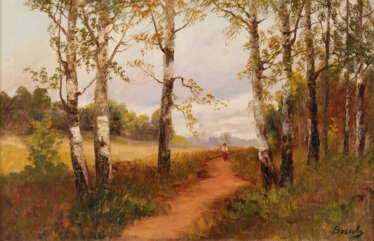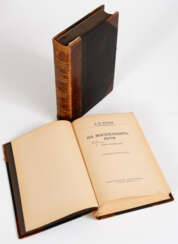615 Items by auctions and galleries:
weg
Lot 1677 Carl Spitzweg
Carl Spitzweg (1808 - 1885)  A195: Internationale Kunstauktion — Teil 2
A195: Internationale Kunstauktion — Teil 2 

Carl Spitzweg
05.02.1808 - 23.09.1885
Germany
Carl Spitzweg was a German romanticist painter, especially of genre subjects. He is considered to be one of the most important artists of the Biedermeier era.

Kunstauktionshaus Schloss Ahlden GmbH
A195: Internationale Kunstauktion — Teil 2
Date: 06.12.2025 10:00 UTC +01:00
Number of lots in the catalog: 1053
Lot 1690 Carl Spitzweg
Carl Spitzweg (1808 - 1885)  A195: Internationale Kunstauktion — Teil 2
A195: Internationale Kunstauktion — Teil 2 

Carl Spitzweg
05.02.1808 - 23.09.1885
Germany
Carl Spitzweg was a German romanticist painter, especially of genre subjects. He is considered to be one of the most important artists of the Biedermeier era.

Kunstauktionshaus Schloss Ahlden GmbH
A195: Internationale Kunstauktion — Teil 2
Date: 06.12.2025 10:00 UTC +01:00
Number of lots in the catalog: 1053
Lot 262 Carl Spitzweg
Carl Spitzweg (1808 - 1885)  A419: Kunst und Antiquitäten Winter 2025
A419: Kunst und Antiquitäten Winter 2025 

Carl Spitzweg
05.02.1808 - 23.09.1885
Germany
Carl Spitzweg was a German romanticist painter, especially of genre subjects. He is considered to be one of the most important artists of the Biedermeier era.

Kunstauktionshaus Neumeister
A419: Kunst und Antiquitäten Winter 2025
Date: 03.12.2025 14:00 UTC +01:00
Number of lots in the catalog: 356
Schloss Emming bei Ersing
Carl Spitzweg (1808 - 1885)  Anton Windmaier (1840 - 1896)
Anton Windmaier (1840 - 1896)  Shop Artkunst
Shop Artkunst

Carl Spitzweg
05.02.1808 - 23.09.1885
Germany
Carl Spitzweg was a German romanticist painter, especially of genre subjects. He is considered to be one of the most important artists of the Biedermeier era.

Anton Windmaier
04.04.1840 - 13.01.1896
Germany
Anton Windmaier is a German landscape painter known for his paintings of landscapes in inclement weather.

Shop
Artkunst
Germany
Number of products: 144








































































